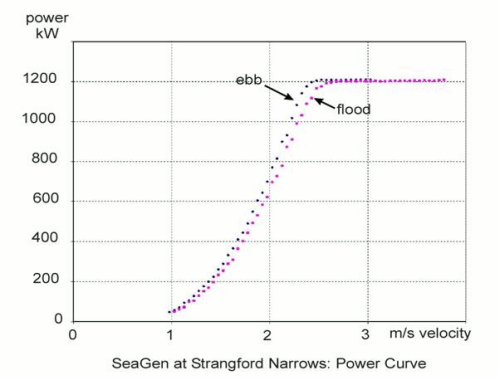
The certification confirms that the tidal turbine has been correctly evaluated according to the principles contained in the Edinburgh Protocol for tidal turbine testing developed by the University of Edinburgh for the UK Government’s Department of Energy & Climate Change (DECC), and the European Marine Energy Centre’s (EMEC) own testing protocol.
Some key results that came from the testing indicate that the tidal turbine has met its design goals with the peak efficiency for both rotors on both tides averaging 48% (Cp = 0.48) and the best result was a peak efficiency of 52% and worst peak was 45%, MCT says.
The absolute theoretical maximum efficiency for a perfect rotor would be 59.3%: a well known limit generally attributed to the German aerodynamicist Albert Betz, which means the SeaGen tidal turbine has been found to achieve from 75% to 88% of the theoretical ideal.
The corresponding overall system efficiency, including all losses in the generator, gearbox and power electronics, was found to be in the range 40-45%; that is the proportion of energy in the flow of water intercepted by SeaGen’s tidal turbine rotors that can get delivered as electrical energy into the grid.


